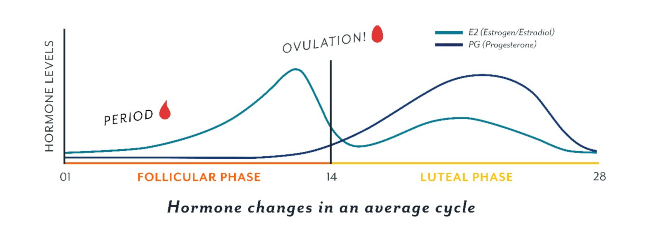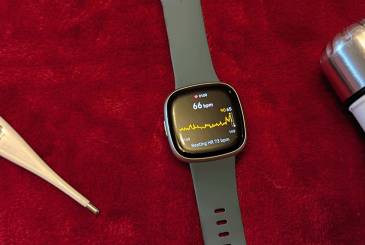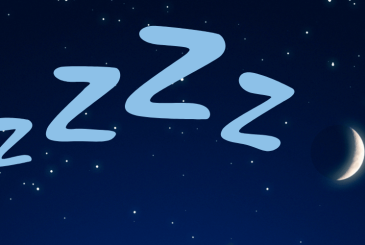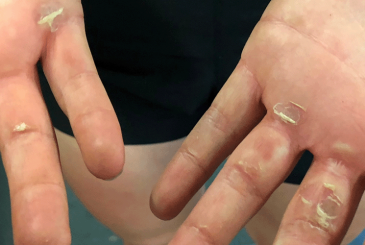GB Rowing Team Sport Scientist Sarah Moseley explains the menstrual cycle to help athletes and coaches understand the impact it can have on training and performance.
The menstrual cycle is often a subject that is avoided in conversation and dismissed as ‘that time of the month’. However, the menstrual cycle is part of a much bigger health and performance picture for female athletes.
For many athletes, the menstrual cycle is considered an inconvenience and something that is a barrier to training and performance. However, by understanding its importance we will quickly realise it is something we should embrace rather than resent.
The menstrual cycle
The menstrual cycle is a reoccurring cycle of fluctuating hormones that are essential for the health, wellbeing, and performance of females – athletes or otherwise.

The average cycle length is 28 days, however, lengths of 24 to 38 days are often reported. It is the fluctuations of two main hormones – oestrogen and progesterone – that can have an impact on sporting performance and also have important implications for health. These hormones travel around the body in the bloodstream. They have an impact on a wide range of physical and psychological functions, including metabolism and fuel utilisation, immune function, injury risk and the way you adapt and recover from training. Read more here.
75% of athletes experience negative symptoms due to menstruation
The menstrual cycle length is calculated from the first day of a period to the day preceding the next period. There are four phases of the menstrual cycle with each impacting training and performance in different ways. These phases are: menstruation, the follicular phase, ovulation and the luteal phase.
Phase 1: Menstruation
Menstruation is the first phase of the menstrual cycle and it typically lasts between three to seven days. During this phase, oestrogen and progesterone are at their lowest level which can cause low energy levels and mood state. This is the phase that many athletes dread – a recent study indicated that approximately 75% of athletes experience negative symptoms due to menstruation and 42% of athletes feel that it negatively impacts their training and performance. The most common symptoms include anxiety and mood disturbances, fatigue, stomach cramps and breast pain. Other symptoms often include back pain, headaches, and bloating. For most, the symptoms associated with menstruation are mild and manageable, however for some, symptoms can significantly impair training and performance.
Inflammation can also be high during this phase so you may want to consider cutting back on pro-inflammatory foods such as vegetable oil, alcohol, and refined sugar. Instead focus on consuming a high proportion of anti-inflammatory foods such as fruit, vegetables and leafy greens, whole grains and oily fish such as mackerel. Stretching and yoga may also help to alleviate and relax tight muscle tone during this phase.
Phase 2: The follicular phase
The follicular phase is the second phase of the menstrual cycle which occurs between the first day of menstruation and ovulation. This phase is marked by a progressively rise in oestrogen which peaks between days 10 to 14. Oestrogen has a positive effect on mood and is often called the ‘feel good’ phase of the menstrual cycle, as it coincides with the release of the body’s ‘feel good’ hormone, serotonin. During this phase, you may feel more energetic and motivated to train.
For female athletes and their coaches, better understanding of how the body changes throughout the menstrual cycle can be an incredibly helpful tool
Phase 3: Ovulation
This is the shortest of the four phases as it lasts only two to three days. Oestrogen levels reach a peak before falling, and a surge in the luteinising hormone (LH) results in ovulation. Energy levels and mood state are usually at their highest during this phase.
Phase 4: The luteal phase
The luteal phase occurs after ovulation – concentrations of progesterone begin to rise along with a small rise in oestrogen. Progesterone promotes the storage of glycogen in the liver and decreases glucose utilisation. As such, some athletes cannot burn glycogen as efficiently during this phase and may experience greater levels of fatigue.
Elevated progesterone concentrations are also associated with an increase in core body temperature and heart rate. When core temperature is elevated, blood is directed to the skin away from the muscles and organs to remove heat. This can compromise oxygen delivery to the muscles, resulting in the greater stress on the cardiovascular system, perceived effort and, potentially, earlier onset of fatigue.
At the end of this phase, both oestrogen and progesterone levels plummet which is strongly linked to pre-menstrual symptoms such a mood swings, weight gain, sleep disturbances and breast tenderness. This drop in hormones triggers menstruation and the cycle recommences.
Take home message
A healthy, natural menstrual cycle should be regular and manageable and is essential for a wide range of physiological functions.
Every female has their own personal menstrual experiences and while the research in this area is growing, there is a no one size fits all approach when it comes to training application and management.
For female athletes and their coaches, better understanding and monitoring of how the body changes throughout the menstrual cycle and in response to training can be an incredibly helpful tool. You can do this in a number of ways for example, recording menstrual dates and symptoms on a calendar or within a training diary. There are also a growing number of apps that allow you to monitor menstrual cycles and symptoms, such as Clue and FITR Woman.
The more we understand our body and the way it responds, the better we can set ourselves up for success in reaching our health and fitness goals.
This article focuses on the basics of the menstrual cycle. See also the British Rowing Plus articles on relative energy deficiency syndrome (RED-S) and the menopause where these essential hormones can become disrupted and suppressed.
Photo: Drew Smith Graphic: Clue










